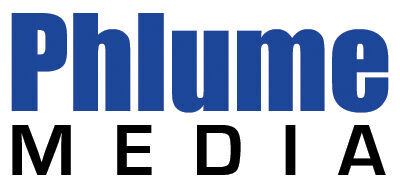
Social media can be incredibly productive and helpful when used correctly. Nowadays, almost all businesses and professionals have at least one social media account. However, it’s important to know what’s appropriate and what isn’t when it comes to social networking.
DO
Have complete and active social profiles
The first thing you need to do when maintaining social media profiles for your business is to make sure they are complete and active. This means filling out all the business details on your profile page. This includes your website, business hours, email, address, phone number, etc.
You also want to make sure you’re posting to your accounts regularly. Even a post every few days is enough to show your potential customers that the accounts are up to date and active.
Be consistent with your content
You want your content to be consistent in every sense of the word. Not only in posting schedule but in information as well. What you post on your social media pages should match what’s on your website. This would cut down on any confusion and shows attention to detail.
Having a consistent “voice” to your social media posts is very important. It helps reinforce your business’s brand. By reading and viewing your content, your audience should be able to recognize your company’s voice.
 Prioritize your social platforms
Prioritize your social platforms
Not all social media platforms are necessary are each business. It’s important to prioritize which would work best. In general, Facebook is a good starting point across the board. Almost all businesses have a website and a Facebook page. In this digital age, it is essential to have both.
Facebook is a quick, easy way to share information, photos, and updates. Instagram is primarily to share photos. Twitter is good for sharing photos and short bits of information or links. If you don’t have too many photos to share or lots of information, Instagram and Twitter may not require your focus as much as Facebook does. That doesn’t mean you shouldn’t use them, it only means you should prioritize which platforms require more attention than others.
Regularly interact with your audience
Sharing and creating content is important, but interacting with your audience is as well. This means responding to posts, comments, and reviews. If you have a large following, it can be overwhelming to respond to everyone, so don’t feel like you have to. Choose a few public posts to comment on, however, make sure to keep up with any private messages.
Regular interactions online keep your profiles active and interactive. It will let your audience know that you value their communications, as well as allow you to gain valuable insights.
Give credit and think before tagging

If you are sharing photos that you yourself haven’t taken, make sure to give credit to those who did take them. This is good advice not just for photos but for anything you are posting that doesn’t belong to you.
One of the great parts of social media is the ability to tag other people or businesses. However, be careful when you do so. You want to make sure those you are tagging are those you would not mind professionally being associated with.
DON’T
Overshare your personal life
Professional social media platforms shouldn’t be treated as your personal ones. There is a certain level of decorum that should be followed. Sharing small parts of your personal life isn’t a bad thing if that’s something you’re comfortable with, but try to make sure you draw boundaries.
It can be very offputting to visit a business or professional profile only to be bombarded with details about the person’s personal life.
Use poor grammar and spelling
If you are using social media in a professional setting, it’s important to use proper grammar and spelling. It’s not only visually unappealing but can come across as rushed and lacking attention to detail.
To counter this, try crafting your social media content in a word document to catch any mistakes and make it easier to proofread.
 Use the same wording/message again and again
Use the same wording/message again and again
It’s only to repeat your content on occasion, especially if it’s something that doesn’t change. However, you want to make sure that you don’t use the same wording or messages repeatedly. It can come across as lazy. Also, if your audience reads the same posts, they will be more likely to ignore updates or unfollow your profile altogether.
Repost other’s images or posts
This one is seen a lot on social media and is a big no-no. Never report someone else’s images or posts. Always share from their account when it’s possible. Certain exceptions do apply, such as Instagram where sharing isn’t an option.
However, on Facebook and Twitter, there are sharing options. Sharing is a great way to show professional support and help with your profile activity.
Focus entirely on follower numbers
Follower numbers are important, however, don’t focus on them at the expense of everything else. Having a lot of followers is great but if no one is interacting on your page, it’s not a very good sign.
You need to strike a balance between growing your numbers and providing your followers with content.
Incorporating these practices into your social media management can help boost your online presence in positive and productive ways. To learn more about managing social media or to discuss an in-depth social media audit with one of our marketing professionals, check out phlume.com/services/social-media.
